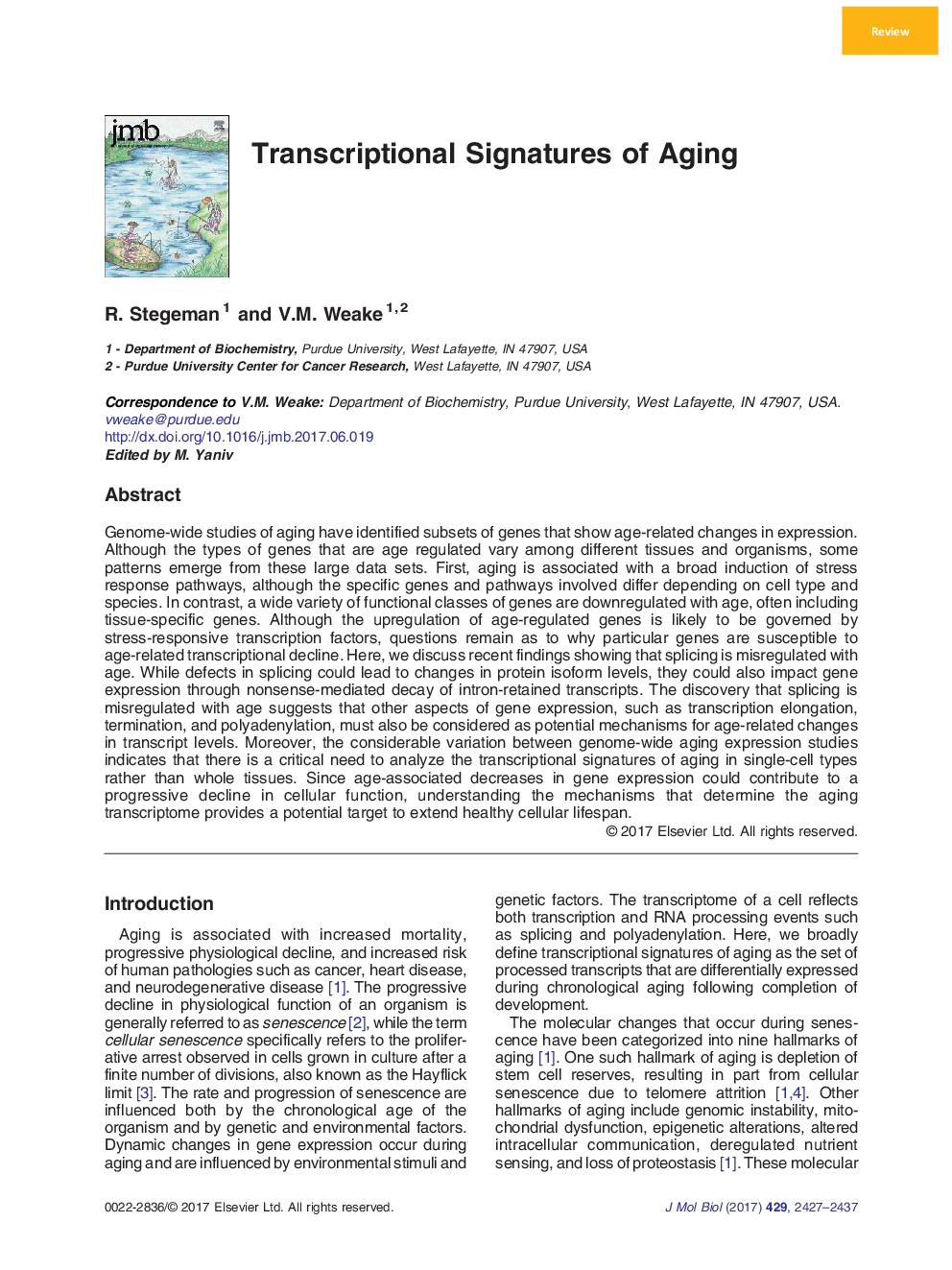| کد مقاله | کد نشریه | سال انتشار | مقاله انگلیسی | نسخه تمام متن |
|---|---|---|---|---|
| 5532951 | 1402090 | 2017 | 11 صفحه PDF | دانلود رایگان |
- A relatively small percentage of an organism's transcriptome changes with age.
- A broad group of stress-responsive genes increases with age.
- A variety of genes decrease with age depending on tissue and cell type.
- Splice isoform usage and intron retention change with age.
Genome-wide studies of aging have identified subsets of genes that show age-related changes in expression. Although the types of genes that are age regulated vary among different tissues and organisms, some patterns emerge from these large data sets. First, aging is associated with a broad induction of stress response pathways, although the specific genes and pathways involved differ depending on cell type and species. In contrast, a wide variety of functional classes of genes are downregulated with age, often including tissue-specific genes. Although the upregulation of age-regulated genes is likely to be governed by stress-responsive transcription factors, questions remain as to why particular genes are susceptible to age-related transcriptional decline. Here, we discuss recent findings showing that splicing is misregulated with age. While defects in splicing could lead to changes in protein isoform levels, they could also impact gene expression through nonsense-mediated decay of intron-retained transcripts. The discovery that splicing is misregulated with age suggests that other aspects of gene expression, such as transcription elongation, termination, and polyadenylation, must also be considered as potential mechanisms for age-related changes in transcript levels. Moreover, the considerable variation between genome-wide aging expression studies indicates that there is a critical need to analyze the transcriptional signatures of aging in single-cell types rather than whole tissues. Since age-associated decreases in gene expression could contribute to a progressive decline in cellular function, understanding the mechanisms that determine the aging transcriptome provides a potential target to extend healthy cellular lifespan.
Graphical Abstract339
Journal: Journal of Molecular Biology - Volume 429, Issue 16, 4 August 2017, Pages 2427-2437
